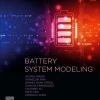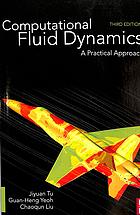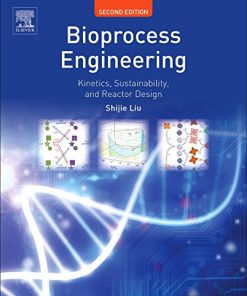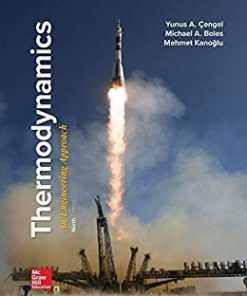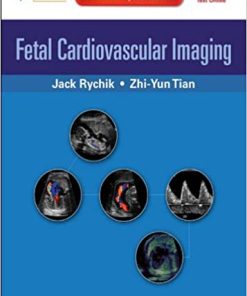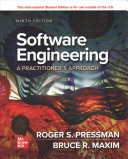Cardiovascular Engineering A Protective Approach 1st edition by Shu Liu 1260457650 9781260457650
$50.00 Original price was: $50.00.$25.00Current price is: $25.00.
Cardiovascular Engineering: A Protective Approach 1st edition by Shu Q. Liu – Ebook PDF Instant Download/DeliveryISBN: 1260457650, 9781260457650
Full download Cardiovascular Engineering: A Protective Approach 1st edition after payment.
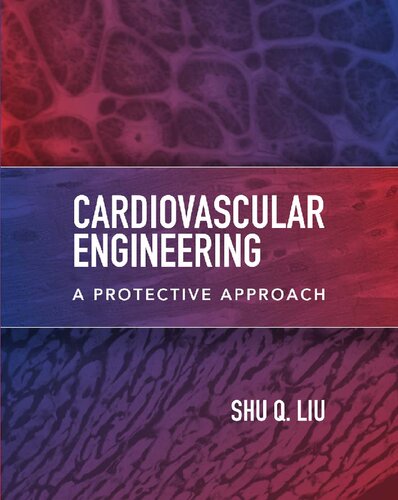
Product details:
ISBN-10 : 1260457650
ISBN-13 : 9781260457650
Author: Shu Q. Liu
Publisher’s Note: Products purchased from Third Party sellers are not guaranteed by the publisher for quality, authenticity, or access to any online entitlements included with the product. Cardiovascular engineering principles and practices with a focus on disease prevention Aimed at advanced students taking cardiovascular, regenerative, and tissue engineering courses, Cardiovascular Engineering: A Protective Approach explores applications of protective engineering strategies and technologies to common cardiovascular disorders. A protective approach to cardiovascular engineering involves studying the naturally occurring mechanisms that protect molecules, cells, and organs from injury and dysfunction. The goal is to use this understanding to design and develop engineering-based therapeutic strategies and technologies that prevent cardiovascular injury and disease. Readers will learn the fundamental and applied aspects of cardiovascular engineering. Coverage includes: • Foundations of cardiovascular protective engineering • Development of the heart, blood vessels, and blood cells • Stem cells and regeneration • Structure and function of the heart and blood vessels • Cytokines and growth factors in cardiovascular disease • Mechanisms of disease • Systems protective mechanisms against injury • Protective engineering strategies • Systemic hypertension • Atherosclerosis and arterial aneurysms • Ischemic heart disease and ischemic stroke • Cardiomyopathies and congenital heart disease
Cardiovascular Engineering: A Protective Approach 1st Table of contents:
1 Introduction
Highlights
Overview
Foundations of Protective Engineering
Pathogenic causes and processes
Naturally occurring protective mechanisms
Regional protective mechanisms
Distant protective mechanisms
Protective Engineering Strategies
Molecular protective engineering
Enhancing protective impacts by protein administration and gene transfer
Suppressing adverse gene expression
Gene editing-mediated control of gene expression
Cell-based protective engineering
Tissue-level protective engineering
Perspectives
References
Part I Foundations of Cardiovascular Protective Engineering
2 Development of the Heart, Blood Vessels, and Blood cells
Highlights
Overview
Early Embryonic Development
Overview of embryonic processes
Fertilization—union of the sperm and ovum
Cleavage
Formation of blastocyst
Gastrulation
Development of the Heart
Origin and fate of cardiogenic cells
Regulation of heart development
Formation of the heart tube
Processes of heart tube formation
Regulation of heart tube formation
Cardiac chamber formation
Processes of cardiac chamber formation
Regulation of cardiac chamber formation
Development of the cardiac conduction system
Processes of cardiac conduction system development
Regulation of conduction system development
Development of the Vascular System
Origin of vascular cells
Vasculogenesis and angiogenesis
Regulation of vascular formation
Formation of smooth muscle cells and fibroblasts
Development of Blood Cells
References
3 Stem Cells and Regeneration
Highlights
Overview
Embryonic Stem Cells
Induced Pluripotent Stem Cells
Somatic Stem Cells
Bone marrow stem cells
Hematopoietic stem cells
Mesenchymal stem cells
Resident cardiac stem cells
MDR1-positive resident cardiac stem cells
Sca-1-positive resident cardiac stem cells
Isl1-positive cardiac stem cells
References
4 Structure and Function of the Heart
Highlights
Structure of the Heart
Cardiac chambers and great vessels
Cardiac vasculature
Cardiac cells
Function of the Heart
Excitation-contraction coupling
Cardiac contractile activities
Regulation of cardiac performance
References
5 Structure and Function of Blood Vessels
Highlights
Structure of Blood Vessels
Functions of Vascular Cells
Functions of endothelial cells
Barrier function
Ion transport
Protein transport
Amino acid transport
Glucose transport
Routes of substance transport
Evaluation of endothelial transport function
Regulation of pro- and anti-blood coagulation processes
Regulation of vascular contractility
Regulation of cell proliferative activities
Regulation of inflammatory processes
Generation of extracellular matrix
Angiogenesis
Functions of smooth muscle cells
Contraction and relaxation
Regulation of vascular cell proliferative activities
Generation of extracellular matrix
Functions of fibroblasts
Regulation of Blood Flow
Regulation of Systemic Blood Pressure
Baroreceptors
Chemoreceptors
Renin-angiotensin-aldosterone system
Vasopressin
Nitric oxide
References
6 Cytokines and Growth Factors in Cardiovascular Disease
Highlights
Overview
Cytokines
Interleukins
Interferons
Chemokines
Tumor necrosis factor superfamily factors
Transforming growth factor β family proteins
Hematopoietins
Growth Factors
Epidermal growth factor and heparin-binding EGF-like growth factor
Fibroblast growth factors
Insulin-like growth factor 1
Platelet-derived growth factors
Vascular endothelial growth factors
References
7 Mechanisms of Disease
Highlights
Overview
Etiology and Pathogenic Mechanisms
External environmental factors
Microorganisms
Pathogenic viruses
Pathogenic bacteria
Pathogenic fungi
Pathogenic parasites
Physical factors
Mechanical forces
Radiation
Body temperature
Overnutrition
Protein overconsumption
Lipid and carbohydrate overconsumption
Chemical substances
Cigarette smoke
Heavy metals
Alcohol
Hypoxia
Biological factors
Antigens
Prions
Mental stress
Genetic defects
Chromosomal defects
Addition of a single chromosome
Chromosomal deletion
Addition of a complete haploid set of chromosomes
Simple gene mutations
Autosomal dominant disorders
Autosomal recessive disorders
X-linked disorders
Y-linked disorders
Multiple gene mutations
Senescence
Pathology and Pathophysiology
References
8 Systems Protective Mechanisms
Highlights
Overview
Regional Cardioprotective Mechanisms
Early regional protective mechanisms
Late regional protective mechanisms
Protective inflammatory responses
Distant Protective Mechanisms
Distant protective factors
Discovery and characterization
Induction of distant protective factors
Actions of distant protective factors
Significance of distant protective factors
Distant cell mobilization
Bone marrow cell mobilization
Splenic cell mobilization
Hepatic cell mobilization
Mechanisms of hepatic cell mobilization
Protective actions of mobilized hepatic cells
The Concept of Core Distant Protective Mechanisms
The Concept of Protectome
Evolution of Protective Mechanisms
Systems Protective Engineering
References
9 Protective Engineering Strategies
Highlights
Overview
Understanding Pathogenic and Protective Mechanisms
Identifying mutant or malfunctioned genes by gene profiling
Constructing recombinant genes
Gene amplification
Testing the function of the gene of interest
Molecular Protective Engineering Technologies
Gene transfer technologies
Virus-mediated gene transfer
Retrovirus-mediated gene transfer
Adenovirus-mediated gene transfer
Adeno-associated viruses as gene carriers
Receptor-mediated gene transfer
Liposome-mediated gene transfer
Calcium phosphate-mediated gene transfer
Electroporation-mediated gene transfer
Assessing the expression level of the transferred gene
Assessing the function of the transferred gene
Gene editing
Gene editing by zinc finger nucleases
Gene editing by transcription-activator like effector nucleases
Gene editing by the CRISPR/Cas system
Epigenetic modifications
DNA methylation
Histone modifications
Histone acetylation
Histone methylation
Post-transcriptional modifications
Small interfering RNA-based mRNA modifications
MicroRNA-based mRNA modifications
Differences between siRNAs and miRNAs
Anti-sense oligonucleotide repression of mRNA
Cell-Based Protective Engineering
Tissue-Level Protective Engineering
References
Part II Applications of Cardiovascular Protective Engineering
10 Systemic Hypertension
Highlights
Overview
Pathogenesis
Primary hypertension
Renovascular hypertension
Endocrine hypertension
Pathology and Pathophysiology
Conventional Treatment Strategies
Molecular Protective Engineering Strategies for Primary Hypertension
Boosting vasodilator gene expression
Nitric oxide synthase gene
Natriuretic peptide precursor A gene
Kallikrein and kininogen genes
Suppressing vasoconstrictor genes
Renin-angiotensin-aldosterone system genes
Endothelin gene
Adrenergic receptor genes
References
11 Atherosclerosis
Highlights
Overview
Pathogenesis
Gene mutations responsible for atherogenesis
Lipid metabolism regulatory genes
Low-density lipoprotein receptor (LDLR) gene
Low-density lipoprotein genes
LDLR regulatory genes
Blood pressure regulatory genes
Renin-angiotensin system genes
Sodium regulatory genes
Atrial natriuretic factor gene
Adrenergic system genes
Endothelin genes
Nitric oxide synthase genes
Inflammation regulatory factor genes
Genes regulating vascular cell proliferation and migration
Atherogenic environmental factors
Lipid-rich diets
Exposure to cigarette smoke and toxins
Regional mechanical factors
Antioxidant deficiency
Superoxide free radical O•2−
Reactive nitrogen species
Transition metal ions
Redox regulatory enzymes
Antioxidants
Sedentary lifestyle
Atherogenic disorders
Obesity
Hypercholesterolemia
Hypertension
Diabetes
Pathogenic processes
Lipid retention
Inflammatory responses
Cell proliferation and migration
Pathology and Pathophysiology
Pathological changes during the initial stage
Pathological changes during the developing stage
Pathological changes during the advanced stage
Conventional Treatment Strategies
Anti-hyperlipidemia agents
Anti-smooth muscle cell proliferative agents
Alleviating angina
Relieving cardiac workload
Angioplasty
Stent placement
Arterial reconstruction
Molecular Protective Engineering Strategies
siRNA-mediated silencing of inflammatory and mitogenic genes
Anti-inflammatory and anti-proliferative gene therapy
Gene editing-based anti-atherogenic strategies
Cell- and Tissue-level Protective Engineering Strategies
Cell-integrated extracellular matrix constructs
Cell-integrated polymeric vascular constructs
Development of arterial constructs in vivo
Mechanical modifications of arterial constructs
References
12 Arterial Aneurysms
Highlights
Overview
Pathogenesis
Pathology and Pathophysiology
Biomechanics of Arterial Aneurysms
Protective Engineering Strategies
Molecular protective engineering strategies
Cell-based protective engineering strategies
Tissue-level protective engineering strategies
References
13 Coronary Heart Disease
Highlights
Overview
Pathogenesis
Coronary artery thrombosis
Coronary artery atherosclerosis
Coronary artery embolism
Pathology and Pathophysiology
Acute myocardial infarction
Impairment of myocardial function
Forms of cardiomyocyte death
Necrotic cell death
Apoptosis
Autophagy
Acute inflammatory responses
Fibrosis and angiogenesis
Therapeutic and Adverse Impacts of Blood Reperfusion
Naturally Occurring Mechanisms of Myocardial Protection
Conventional Treatment Strategies
Cardioprotective Engineering Strategies
Molecular cardioprotective engineering strategies
Protection against cardiomyocyte death
Regional cardioprotective factors
Distant cardioprotective factors
Protection against oxidative stress injury
Ischemic preconditioning
Ischemic post-conditioning
Enhancing angiogenesis
Cell-based protective engineering strategies
Tissue-level cardioprotective engineering strategies
References
14 Cardiomyopathies
Highlights
Overview
Dilated Cardiomyopathies
Pathogenesis
Pathology
Pathophysiology and clinical features
Conventional treatment strategies
Hypertrophic Cardiomyopathies
Pathogenesis
Pathology
Pathophysiology and clinical features
Conventional treatment strategies
Restrictive Cardiomyopathies
Pathogenesis
Pathology
Pathophysiology and clinical features
Conventional treatment strategies
Arrhythmogenic Right Ventricular Cardiomyopathy
Pathogenesis
Pathology
Pathophysiology and clinical features
Conventional treatment strategies
Heart Failure
Pathogenesis
Pathology and pathophysiology
Clinical features
Conventional treatment strategies
Molecular Protective Engineering Strategies
Modification of mutant genes
Management of ventricular arrhythmia
Prevention of heart failure
Cell-Based Protective Engineering Strategies
Cell-mediated delivery of cardiomyocyte supporting factors
Stem cell-based cardiomyocyte regeneration
Tissue-Level Protective Engineering Strategies
References
15 Congenital Heart Defects
Highlights
Overview
Pathogenesis
Chromosomal defects
Single gene mutations
Environmental factors
Disorders causing congenital heart defects
Pathology and Pathophysiology
Left to right heart shunts
Atrial septum defects
Ventricular septum defects
Patent ductus arteriosus
Heart valve defects
Mitral valve defects
Tricuspid valve defects
Aortic and pulmonary valve defects
Complex defects
Conventional Treatment Strategies
Left-to-right heart shunts
Heart valve defects
Complex defects
Engineering-Based Interventions
Biomaterial-based heart valves
Biological tissue-based heart valves
Cell engineering-based heart valves
Materials used for cell engineering-based heart valves
Cell types used for heart valve engineering
Improving the performance of engineered heart valves
References
16 Ischemic Stroke
Highlights
Overview
Pathogenesis
Pathology and Pathophysiology
Naturally Occurring Neuroprotective Mechanisms
Regional neuroprotective mechanisms
Distant neuroprotective mechanisms
Naturally occurring neuronal regeneration
Conventional Treatment Strategies
Neuroprotective Engineering Strategies
Molecular neuroprotective engineering strategies
Modulating cell survival signaling mechanisms
Modulating cell death signaling mechanisms
Preventing secondary injury
Inducing neural resident stem cell differentiation
Preventing fibrosis
Engineering distant neuroprotective mechanisms
Ischemic preconditioning
Cell-based engineering strategies
People also search for Cardiovascular Engineering: A Protective Approach 1st:
cardiovascular engineering and technology
ijn utm cardiovascular engineering centre
fluid mechanics for cardiovascular engineering
cardiovascular engineering salary
cardiovascular engineering jobs
Tags: Cardiovascular, Engineering, Protective Approach, Shu Liu
You may also like…
Biology and other natural sciences - Biotechnology
Bioprocess Engineering: Kinetics, Sustainability, and Reactor Design 3rd Edition Shijie Liu
Physics - Mechanics
Thermodynamics: An Engineering Approach 10th Edition Yunus 1265901570 9781265901578
Biology and other natural sciences
Bioprocess Engineering: Kinetics, Sustainability, and Reactor Design 2nd Edition Shijie Liu
Physics - Others
Humanities and Social Sciences
Geography of Technology Transfer in China: A Glocal Network Approach Liu 9811274959 9789811274954
Uncategorized
Computers - Programming



